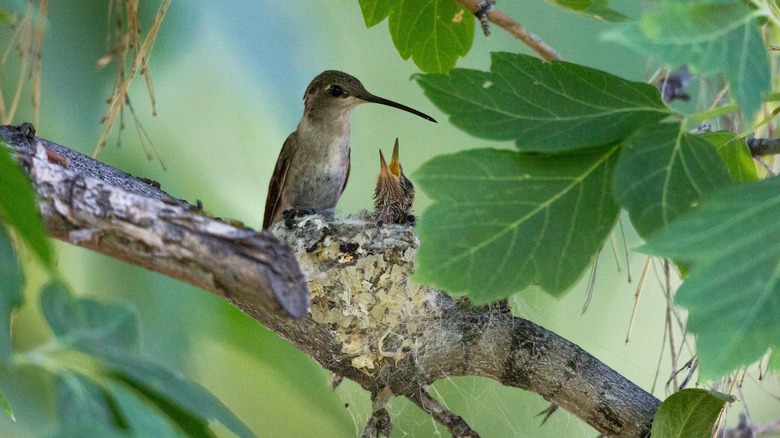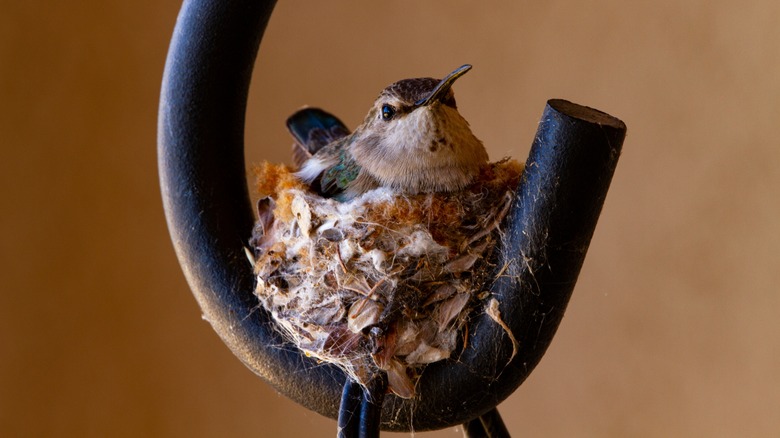The Strange Law You Should Know About Finding Hummingbird Nests & Eggs In Your Yard
Have some pity on the overworked mother. Female hummingbirds tending to a nest full of eggs or chicks are working their tail feathers. They're either warming their future young or filling hungry bellies after flitting from flower to feeder. The last thing she needs is someone messing with her nest. Not only does it frighten the poor birds, it also can alert predators to the nest's location. Luckily, vulnerable hummingbirds have the law on their side: the Migratory Bird Treaty Act of 1918 has been shielding birds for over a century. This act makes tampering with active hummingbirds' nests illegal in the United States and several other nearby countries along migration paths. And it's not only hummingbirds who benefit from legal protection. It's illegal to interfere with any active migratory bird's nest.
Most hummingbirds scope out nesting spots in deciduous trees, on small branches — sometimes at a fork — about a foot from a tree trunk. However, ruby-throated hummingbirds have gotten used to coexisting with humans and may nest on man-made items near homes. Since these nests are strictly hands-off once the birds have laid eggs, there are a few things you can do to prevent hummingbirds from making homes in inopportune spots. There's an unexpected kitchen spice that'll keep birds from nesting in unwanted areas around your home; use a cayenne pepper mixture in places where hummingbirds have nested in the past or where they've begun building a nest. The spicy recipe will discourage the hummingbirds as well as other species from continuing to build their nests.
How (not) to handle a hummingbird nest
Most of the time, we want to encourage hummingbirds to nest in our yards. Yet, sometimes our avian friends lack judgment, and nests end up in spaces that threaten our health or the lives of the hummingbirds. So, what can you do if a hummingbird has made a home in a suboptimal spot on your property? It's definitely not worth breaking the law; if you are found guilty of violating the Migratory Bird Treaty Act, you may be fined up to $15,000 and/or be sentenced up to six months of jail time.
How and when to move the bird nest in your yard is a tricky issue. If the nest is simply in an inconvenient spot, you'll have to put your own needs on hold for a bit while the brood hatches and fledges. Once a female hummingbird lays her eggs, you'll need to be patient for six to 10 weeks. It takes about two weeks for them to hatch and then a month or two for them to reach adulthood and leave the nest.
If an unfortunate mother hummingbird sets up home base in a spot that's dangerous for her and her brood, grab your phone instead of the nest. Contact the U.S. Fish and Wildlife Service. In case they deem that a nest is in a spot that either endangers the animals or human health, they may issue you a permit to move it.

